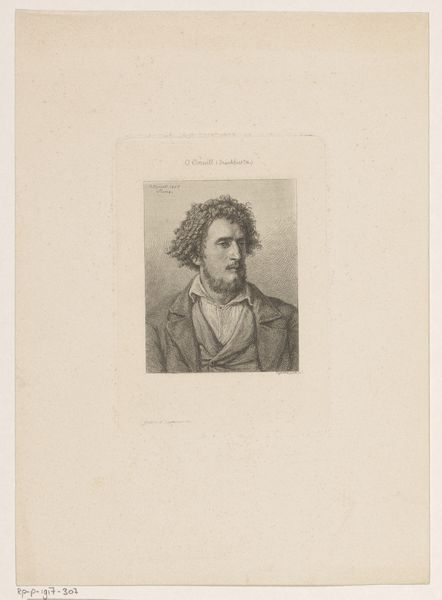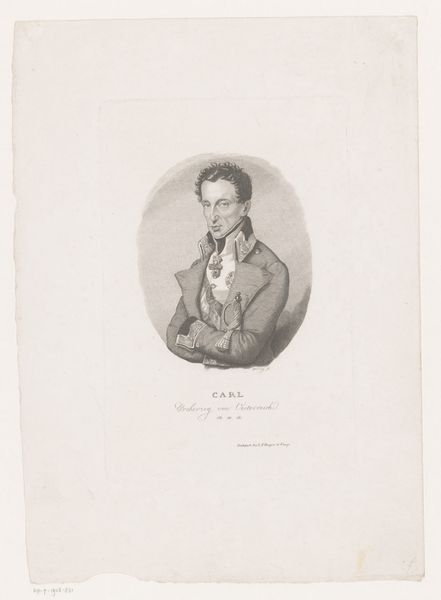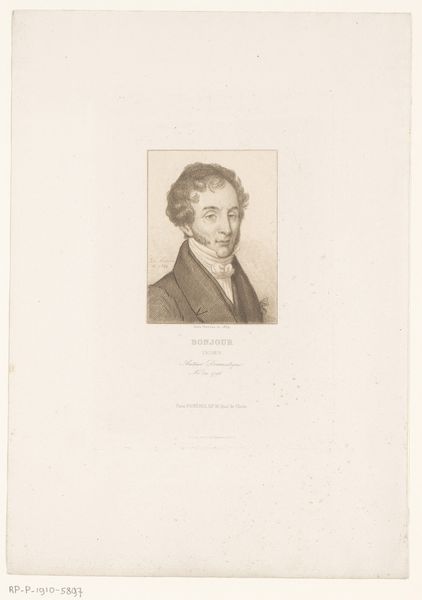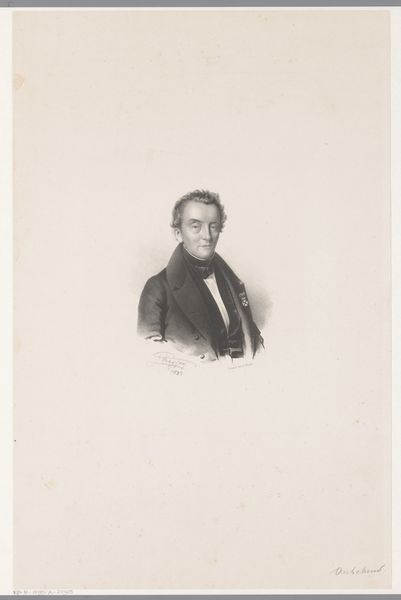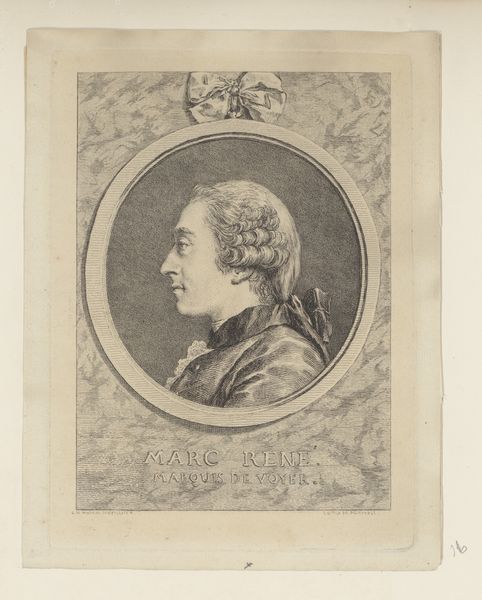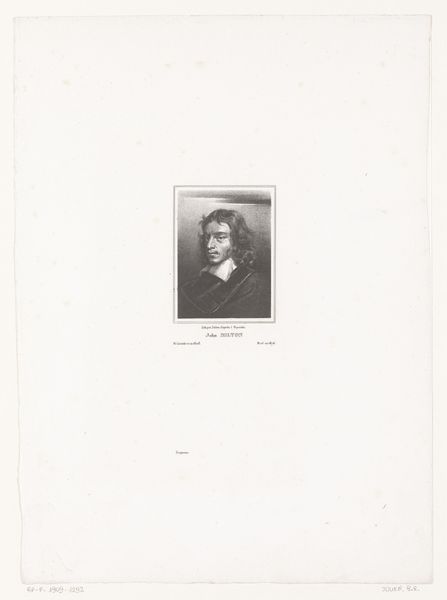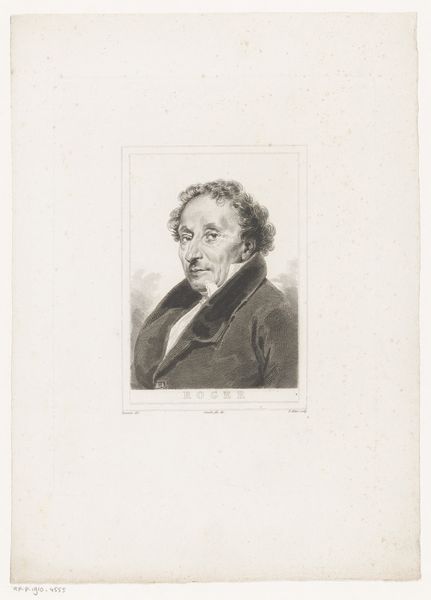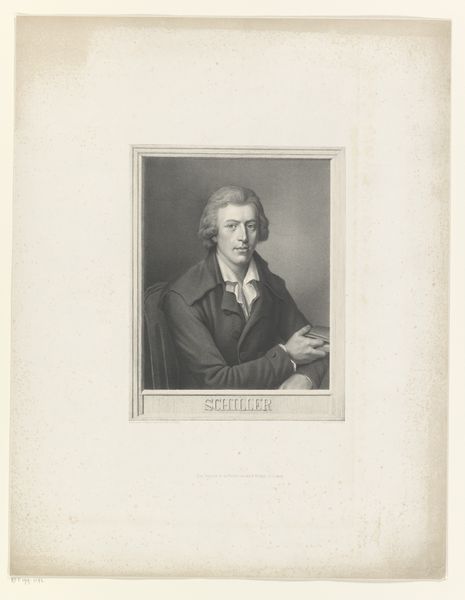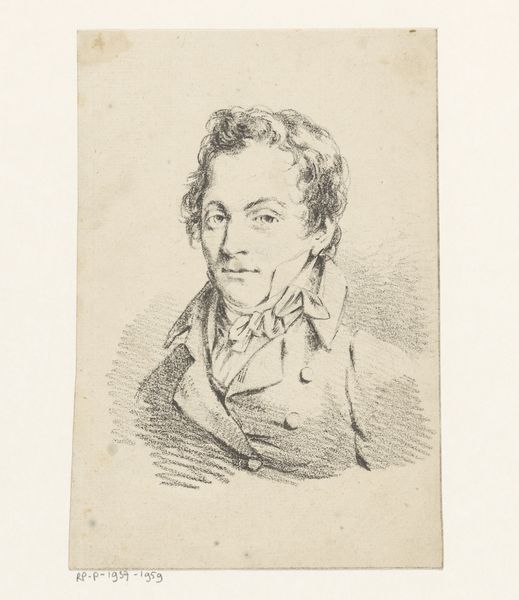
drawing, pencil, graphite
#
portrait
#
pencil drawn
#
drawing
#
neoclacissism
#
self-portrait
#
pencil sketch
#
pencil drawing
#
pencil
#
graphite
Dimensions: height 321 mm, width 253 mm
Copyright: Rijks Museum: Open Domain
Curator: Here we have a self-portrait rendered in graphite on paper. It’s a piece created by Jean-Baptiste Chometon in 1819, placing it squarely in the Neoclassical period. Editor: My first impression is a sense of melancholy. The subject’s gaze is intense, but there’s a vulnerability in the way he’s posed, hand to his face as if in contemplation or perhaps quiet desperation. Curator: Indeed. The artist utilizes hatching and stippling to build up tonal values, giving the drawing a remarkable depth. Note how he focuses on the face and hair, leaving the clothing more loosely sketched. Editor: It's compelling how Chometon crafts the play of light and shadow on his face, it speaks volumes about his self-perception. In that era, how radical was it for artists to gaze inward like this, when societal norms demanded they portray heroes and mythological scenes instead? Curator: The self-portrait emerges as a distinct genre during this period. Artists began to explore the inner life, but always adhering to clear lines, controlled modelling, and an overall sense of idealization. Editor: The Romantic spirit feels undeniable, in spite of those conventions. The slight asymmetry in his expression suggests an embrace of imperfection. Think, too, about the political and social unrest that formed the backdrop to his life. What private battles, or societal ones, might fuel that intensity? Curator: It's easy to overlay narratives, but perhaps we ought to stay focused on what's within the frame. Look at the way he creates texture in the hair, and sets it in contrast to the smooth skin. His self-portrayal relies on a studied use of form. Editor: It is a remarkable study. For me, its value lies in opening a window onto the individual consciousness in a period defined by rigid structure, reminding us that beneath the veneer, humans struggle to assert agency, whether social, artistic, or deeply personal. Curator: I see it as a testament to Chometon’s technical mastery. Editor: Agreed, but that mastery serves a higher purpose—to invite empathy, even now, across two centuries.
Comments
No comments
Be the first to comment and join the conversation on the ultimate creative platform.

